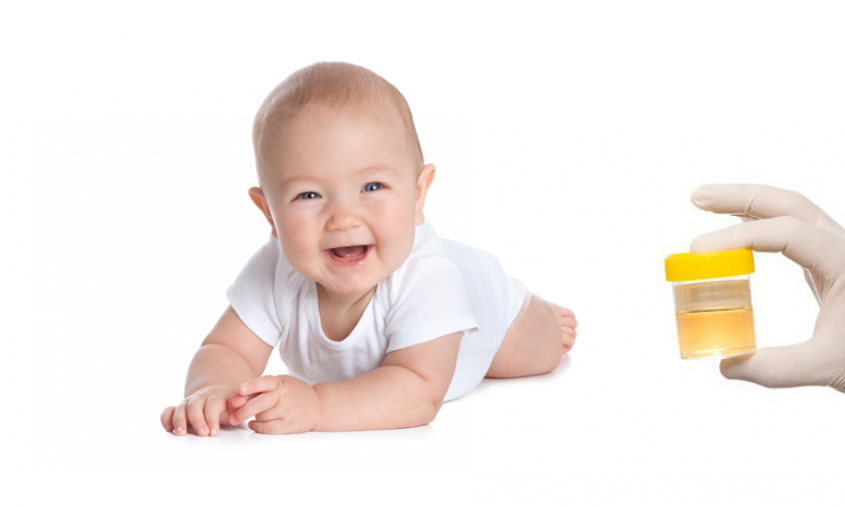
What does the results of urine analysis mean a child. How to collect it correctly. Studies of the child’s urine according to Zimnitsky, Nechiporenko, Sulkovich.
The content of the article
- How to collect a general urine analysis in a child?
- Video: Children's Revengerry: Instructions for use
- How much urine is needed for a general analysis for a child?
- General urine analysis in children: decryption and norm in the table
- Biochemical urine analysis in children: Decryption in the table
- Urine analysis by Nechiporenko norm in children
- Urine analysis by Zimnitsky: Decryption in children
- Video: urine analysis by Zimnitsky
- Urine analysis by Sulkovich: Decryption in children. Calcium urine analysis in children - decryption, norm
- Urine analysis for pyelonephritis in children: Decryption
- Analysis for acetone in children: decryption, norm
- Video: measurement of ketones in the urine
- Why in the analysis of urine increased leukocytes in a child?
- Why mucus in the analysis of urine in a child?
- Why is the protein in the analysis of urine in a child?
- Video: Protein in the urine. What to do? Tips to parents
- Why is salt in the analysis of urine in a child?
- Video: urine analysis and urinary tract infection - School of Dr. Komarovsky
Analysis of urine in a child is one of the ways to diagnose certain problems with his health., One of the most informative studies. Often parents, receiving in their hands, his results, look forward and anxious with a doctor who will say whether they are normal, since they themselves do not understand the indicators. Meanwhile, it would not hurt to know when you can be calm, and when you should run to a specialist before the appointed time.
How to collect a general urine analysis in a child?
Urina is an aqueous solution of substances, organic and inorganic, removed from the body with kidneys. The composition of urine is changed, some of its components have not yet been fully studied. It depends on the age, time of day, but always reflects in what condition they are:
- kids
- urinary system
- the whole organism
Important: if a child is prescribed a general urine analysis, you do not need to be scared: it is preventive. It is not necessary that the doctor suspects the baby this or that disease
Assign to pass urine:
- a child up to a year at one of the mandatory examinations
- before vaccinations
- in front of the kindergarten and school
- before traveling to children's sanatorium, camp, sports competition, so on
- if you suspect diseases of the allocation organs
- after a bacterial infection (tonsillitis or scarlet fever provoked by streptococci)

A general urine analysis is an event that allows you to assess the condition of the child's body.
In order for the results of studies of the child’s urine to be really reliable, you need to correctly collect the material. And this is not always simple, especially when it comes to a baby up to a year.
Preparations for the delivery of urine analysis should begin in a day. There are several training rules that the doctor should report to parents:
- On the day before the analysis, you can not feed the baby with vegetables and fruits with bright color (carrots, oranges, silk, blueberries, other), acute and too salt, synthetic food
- On this day, you also can not drink strong tea, alkaline mineral water, carbonated drinks
- If the child takes vitamins or some kind of drugs for prevention, a break is taken for a day
- If the child visits the sports section, dance circle, pool, other, in the evening before the analysis, training should be skipped: physical activity in the evening contributes to the appearance of protein in the urine in the morning
Important: for a general urine analysis, the “morning” urine is taken, that is, the one that stands out with the first urination after awakening. For parents this is a real problem, because the younger the child, the more difficult it is the most urination to catch
If the child is accustomed to the pot and can tolerate it as necessary, he is collected urine like an adult:
- In the pharmacy you should buy a sterile container. You can, as they did before, prostrate a small jar of a small volume. But this is unnecessary trouble. And it is not always possible to save it sterile
- In front of the urine fence, measures are held for hygiene of the external genital organs of the child - they should be washed with soap
- The child is asked to pee into a jar. In this case, the girl is pushed through the labia, the boy raises the foreskin

Container for collecting urine.
If the baby wears diapers, does not control urination, parents have to literally chase the analysis. And they come up with all sorts of tricks.
- A sterile jar is substituted for a penis to a boy
- Under the buttocks, the girls put a plate diluted with boiling water
- Waiting for 30 minutes or an hour to speed up urination, pour water over the baby’s ear, open cranes with water, make tummy massage, and repeat the “Doses”

Urine's fence in boys and infants.
Important: the baby is difficult to do with the toilet of the genitals before the analysis of Urina. If he wears a diaper, it is mandatory to wash so that particles of the product, feces, and so on do not get into the urine for research. Under the influence of a warm stream of water in the bathroom, under its murmuring, the baby can pee directly in the bathroom. Well, if you manage to catch the portion you need for analysis
But there is a much easier way - to buy a ureter in a pharmacy. It is sterile made of polyethylene and designed for urine volume.
- The urinary receiver has an oval window edged with a sticky tape
- The sticky tape should be removed and glued to the genitals of the baby
- The girls are captured in the entire area of \u200b\u200bthe labia and a little pubis
- In boys, a penis and scrotum are placed in the window
- After urination, the urinary receiver is carefully removed, its contents are poured into a sterile jar and taken to the laboratory
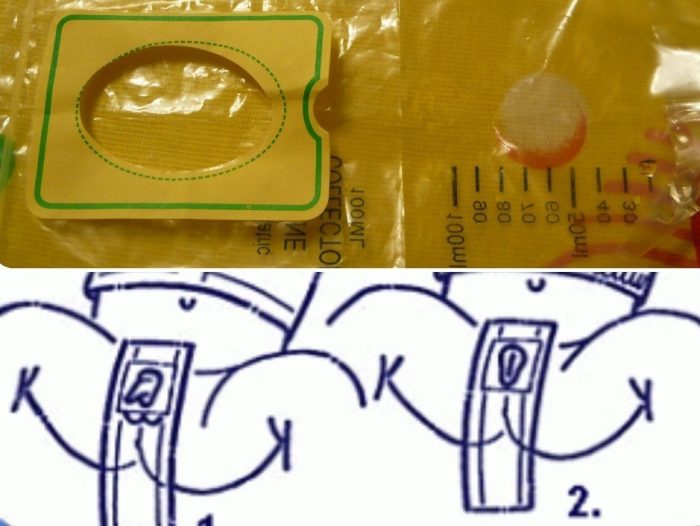
Children's receiver of urine.
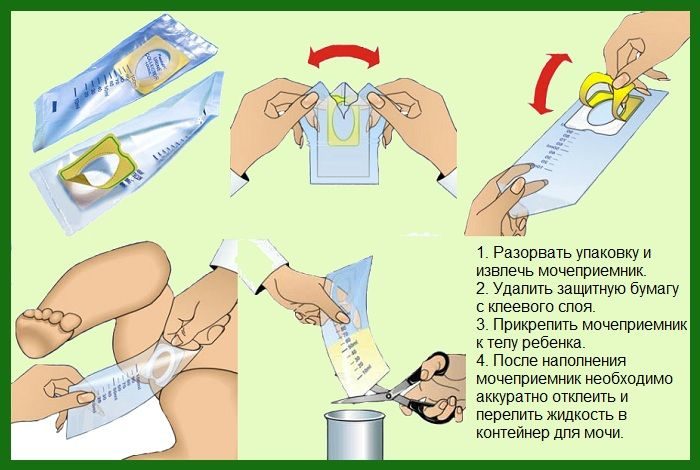
Urine to analyze the pectoral.
Important: there is an opportunity to wear a ureter under the diaper
But this one cannot categorically do this when the child’s urine is analyzed:
- pour it out of a pot
- squeeze out
- assemble
- store urine in the warmth or, on the contrary, in the refrigerator
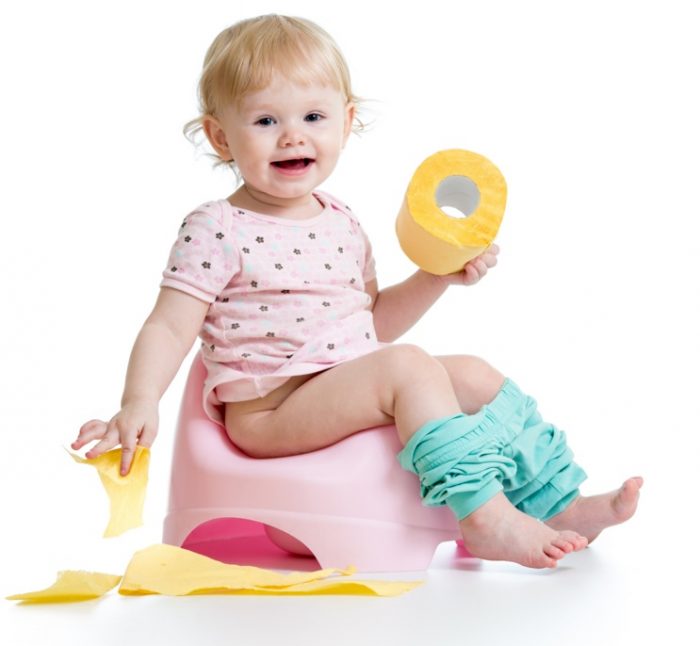
It is categorically impossible to collect urine for analysis from the pot.
Video: m children's score: instructions for use
How much urine is needed for a general analysis for a child?
If we are talking about the analysis of urine in an adult, the laboratory requires to carry at least 50 ml for analysis. The child defeats more often, he is unlikely to “give out” such an amount.
Important: for a general analysis, it is necessary to collect at least 10 ml of urine of the child, and ideally-20-30 ml
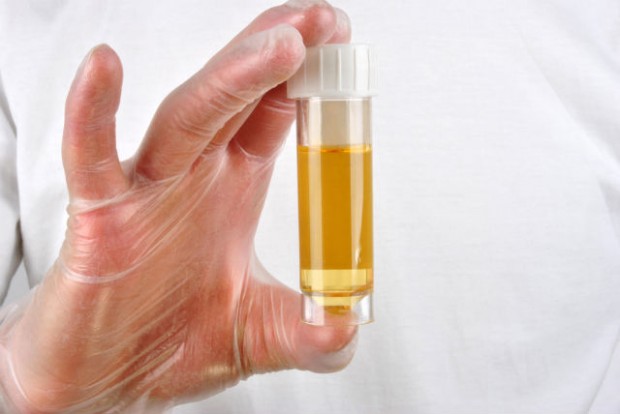
For analysis, you need to carry 20-30 ml of urine of the child.
This volume also needs to be obtained correctly. There are two ways, and doctors cannot come to the opinion which one is more correct.
The first one:
- With the beginning of urination, a small amount of urine in the toilet or bathroom should be distinguished
- The average portion of urine is taken to the jar
- Upon receipt of the required volume, urination in the toilet or bathroom continues
It is difficult for a child to do this, and if he does not go to the pot, it is generally impossible. Then they use the option of the second:
- Take the entire volume of urine into a sterile container or urinary receiver
- Mix it
- Pour the required volume to the container for analysis
General urine analysis in children: decryption and norm in the table
In the district children's clinics, a tiny form is often issued for urine analysis, laboratory assistants fit the results there. For reductions, letters and numbers, parents do not understand anything.
In private laboratories, the results are issued on forms, and the norms are also indicated. More or less clear.
But do parents need to understand this result? After all, the doctor should interpret them, especially since the diagnosis should make a diagnosis. And if the condition is urgent, the laboratory assistant sees it and immediately move the information. The answer is clear, to know what the results of the child’s analysis mean to mom and dad for general development in order to satisfy her interest, but in no case in order to treat the baby.
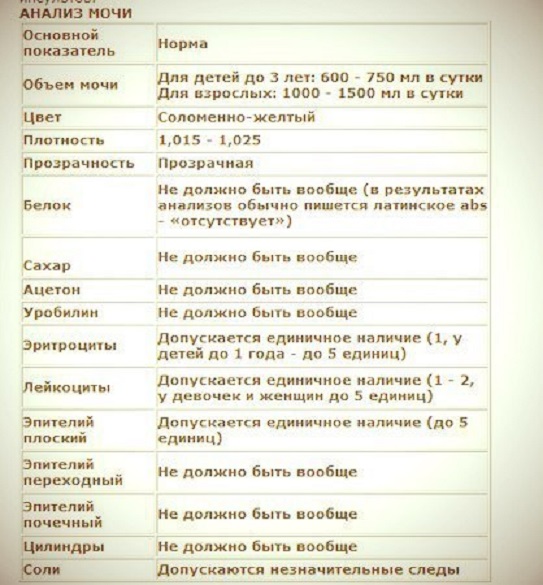
In the form of general analysis of Urina, the laboratory assistant gives the assessment of the following indicators:
- Transparency. If the urine has recently been collected in a healthy child, it should be transparent. Clouding indicates inflammation of the urinary organs, bacterial infection
- Color. Doctors call the straw-yellow and amber. Urina can darken with inflammatory diseases of the kidneys and bladder, Botkin’s disease, poisoning, and so on. Food and medication also affect its color. For example, while taking vitamin-mineral complexes, a child can write bright yellow and even salad
- Acidity. Urina of the child, if he has no health problems, slightly acidic. More strong acidity indicates inflammation in the body, neutrality or alkalinity - of the bacterial infection of the kidneys and bladder. However, in a child whose diet is dominated by animal protein, urine is oxidized. Or, conversely, it is neutralized if it is more vegetables and fruits
- Density. This is an indicator of the number of substances dissolved in the urine (salt, urea, so on). It decreases during the day with the amount of water drunk. Consistent concentration of urine indicates inflammation of the kidneys
- Protein. He should not be attended normally
- Leukocytes. Appear in the urine in response to the presence of microbes in it
- Red blood cells. These are blood cells. And if there are more of them in the urine than units, there is reason to suspect an acute disease. As a rule, hematuria is accompanied by a change in urine color to red or dark brown
- Cylinders. Appear in the urine with increased acidity
- Salt. The most informative result in this indicator is given by daily urine. Salt may be present in uric acid salts, phosphates, sulfates, oxalates, ammonium salts, carbonates, and so on. They talk about illness or malnutrition
Important: sometimes when examining the urine of the child, the laboratory assistant sees bacteria. He makes a mark about this in the form
Biochemical urine analysis in children: Decryption in the table
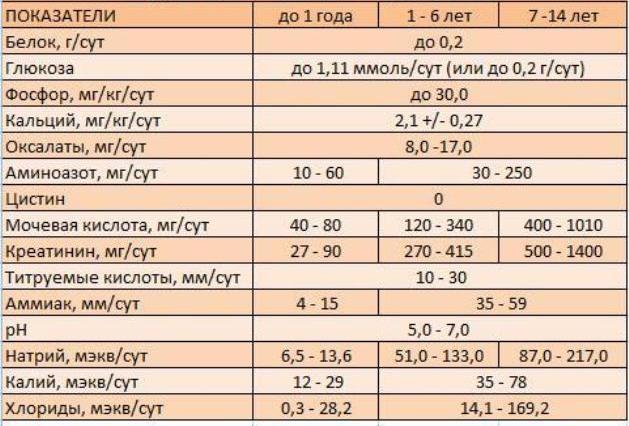
The biochemistry of urine in the child.
For biochemistry, they pass the daily urine of the child. The analysis is quite complicated, without having an appropriate education, it is difficult to understand its results.
The doctor, by its results, can determine such pathological conditions of the body as:
- renal diseases
- inflammation of the urinary system of the body and the whole organism in general
- intoxication
- hormonal malfunctions
- diabetes
- autoimmune diseases
- liver and pancreas diseases
Urine analysis by Nechiporenko norm in children
Analysis of the child’s urine according to Nechiporenko, like the general, shows:
- red blood cells
- leukocytes
- cylinders
But they pass it according to the indications to clarify the results of the general if any inflammatory process was suspected in the urinary system. At the same time, an ultrasound of the kidneys is prescribed.
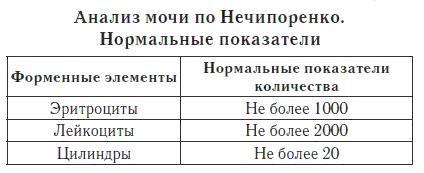
The norms of urine analysis by Nechiporenko.
Two or three days are prepared for the analysis - he sits on a diet on which plant and animal food correctly correlates. In the morning, for the study, after the toilet, the average portion of urine is taken.
On the form with the results, the laboratory assistant will give only three digits, they are in the table.
- An increased number of red blood cells indicates the expansion of the "PO" of the renal filter
- Leukocytosis indicates inflammation of the infectious nature
- The cylinders in the urine of the child are a sign that something is wrong with the renal pelvis of the child, they are inflamed or expanded
Urine analysis by Zimnitsky: Decryption in children
Analysis of children's urine according to Zimnitsky is prescribed for early diagnosis:
- inflammatory kidney diseases
- renal failure
- diabetes
- hypertension
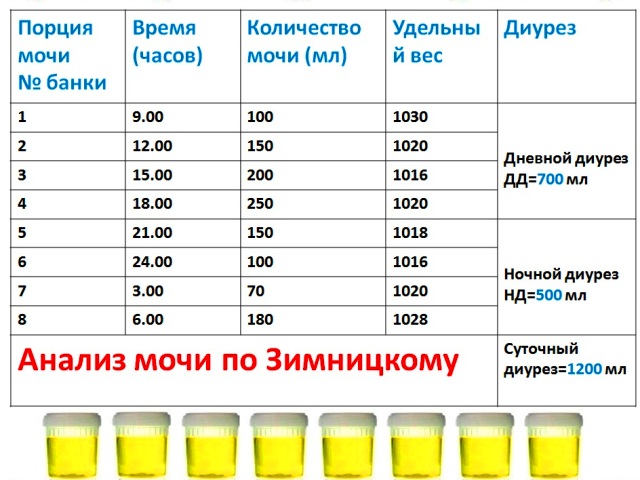
Deciphering the analysis according to Zimnitsky.
Daily urine is carried for analysis. When determining the result, take into account:
- daily volume (in a child from 1.5 to 2 l)
- the amount of urination during the day and night (during the day should be three times more than at night)
- urine density
VIDEO: Urine analysis by Zimnitsky
Urine analysis by Sulkovich: Decryption in children. Calcium urine analysis in children - decryption, norm
If the child has rickets or suspicion of him, he will be assigned an analysis of Urina by Sulkovich. This study allows us to establish in what dose the baby should take vitamin D.
Exceeding the dose of this vitamin is not synthesized in the body can cause hypercalzemia, and lowered rickets.

Urine analysis by Sulkovich: Decryption in children.
It is necessary to determine if there is calcium in the urine.
- If it is not, the result of the analysis according to Sulkovich will be negative (the laboratory assistant puts minus in the form). This speaks of rickets
- If calcium is in moderate quantities, there will be two pluses in the form. The baby gets enough
- If calcium is in increased quantities, there will be three or four pluses in the form. This is hypercalmia
Urine analysis for pyelonephritis in children: Decryption
To determine pyelonephritis (kidney inflammation) and the degree of his activity in the child, he is prescribed a general urine analysis, as well as research on Nechiporenko and Zimnitsky. The disease testifies:
- increased red blood cells
- increased leukocytes
- increased urea content
- the presence of protein
- bacteriuria
- reducing the amount of urine
- an increase in the amount of urination
- increase in urine density
- changing the color of urine

Pyelonephritis, kidney inflammation in a child can be detected by urine analysis.
Important: with bacteriuria, an analysis is additionally prescribed for the flora and sensitivity to antibiotics
Analysis for acetone in children: decryption, norm
In a healthy child, ketone bodies in the blood and urine are present in small quantities. Due to illness or malnutrition, their number may increase.
Important: in 9 cases out of 10 acetone occurs in children and pregnant women
When the symptoms of acetone appear (vomiting, seizures, smell from the mouth, so on), a general urine analysis is prescribed. You can also buy a test strip in a pharmacy to determine ketone bodies in the urine of the child. Normally, they are up to 0.03 g in daily urine.
For the behavior of the test stripes:
- it is advisable to conduct a test in the morning
- collect fresh urine in a sterile container
- remove the strip from the packaging and at the time indicated in the instructions to immerse in the urine
- remove the strip from the capacity of the urine, tap it twice along the edge of the container so that urine residues are removed
- strip on a flat surface
- through the time indicated in the instructions, the test will give out the result by changing the color
- you can evaluate the result on a scale offered to test strips
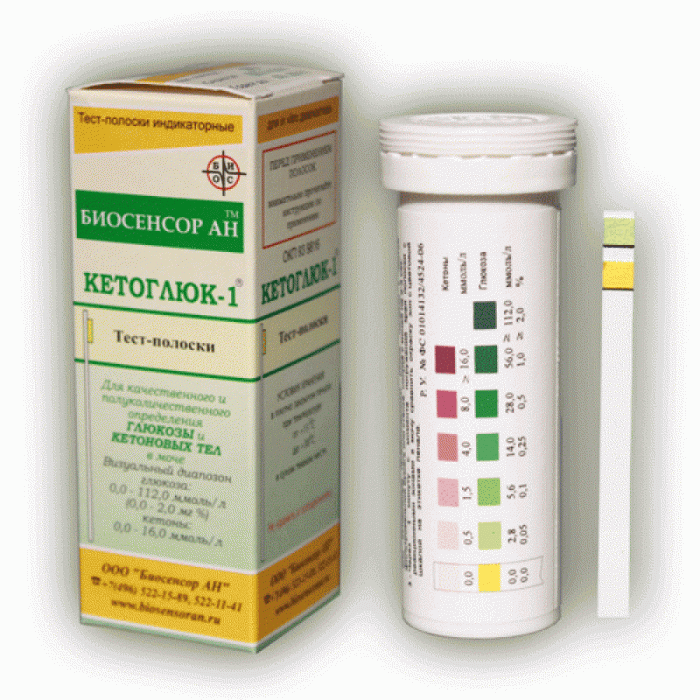
Test strips for determining acetone in the urine.

Conducting a test on acetone.
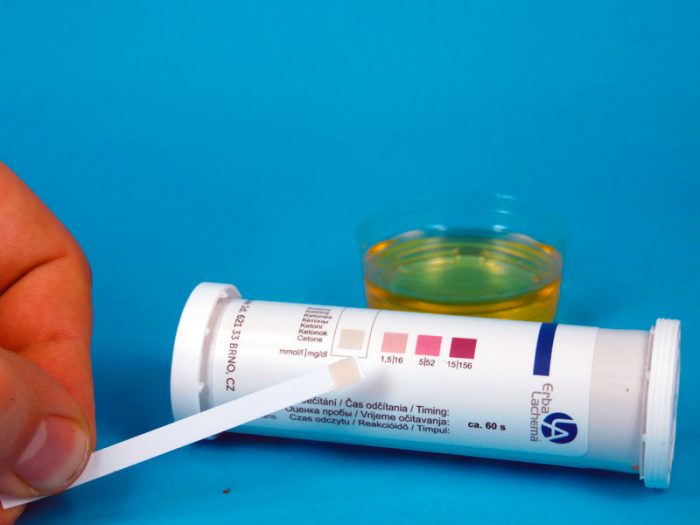
Determining the results of the test on acetone.
Important: If the home test on acetone showed a positive result, you need to take the child to the doctor
VIDEO: Measurement of ketones in the urine
Why in the analysis of urine increased leukocytes in a child?
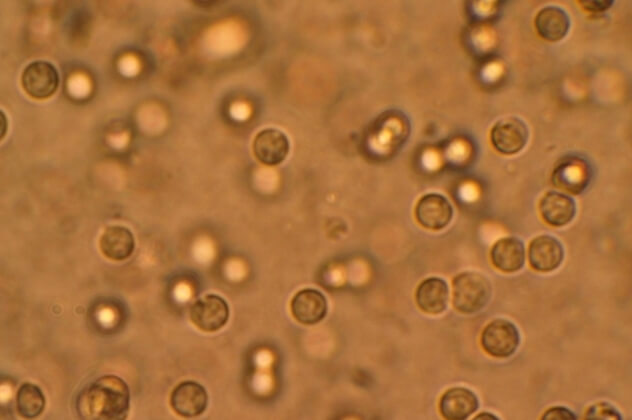
Leukocytes in the urine in a child.
Increased leukocytes in the Urin of the child indicate that he can have:
- allergy
- metabolic disorders
- kidney infection or urinary tract, including bacterial
- inflammation of the external genitalia
Why mucus in the analysis of urine in a child?
If mucus is found in the urine, perhaps the child’s toilet was carried out incorrectly before collecting it. Microflora from the anus or external genitalia could get into the urine.
If the analysis is taken correctly, there is mucus in Urin, perhaps the baby:
- inflammatory process of the genitourinary system
- inflammation of the genitals
Why is the protein in the analysis of urine in a child?
Protein appears at:
- kidney inflammation
- urinary tract infections
- kidney injuries and urinary tract
- diabetes
- hypertension
- epilepsy
- brain concussion
- hypothermia
VIDEO: Protein in the urine. What to do? Tips to parents
Why is salt in the analysis of urine in a child?
Salt appears in the urine in a child most often due to his malnutrition.
